Thingiverse

RF Item Tracker by littleStrong
by Thingiverse
Last crawled date: 3 years, 3 months ago
Quick Summary:
Have you ever misplaced an important item (keys, phone, homework) and feel frustrated when finding it? This device solves your problem; the RF item tracker is an item locator. It works similarly to a metal detector, but with more precision, with one quick sweep, the pain of finding items is a thing of the past. Especially for students, we are not just required but expected to have all of our material presents. The device can make sure with a quick scan that all of your material is present. But, the item tracker in the current state has one of the main issues, which is when working with RF electronics; it is important to keep in mind the parasitics of the electrical components, or the device will lose performance, and the device can differentiate from different items. If I can redesign the design in the future, I will make sure the electrical parasitics is an account, and the sensor upgraded UHF Rfid. UHF Rfid allows read up to 30 meters and programmable tags to know what the item is. UHF Rfid will allow the RF Item Tracker to track inventory with ease. Unlike conventional barcode tracker where an employee has to scan individually. The UHF Rfid RF Item Tracker can sweep the area in an instant saving companies time. Furthermore, 3D printing strengthens the design. 3D printing allows the components to be embedded, making the design cost-effective and robust. This will allow for 3D printing electrical circuits a viable option for heavy-duty applications in the military, industrial industries, and space industries.
More Reading:
1) The device is an item tracker. Sometimes we misplace an item or store an object in a difficult-to-reach shot, but the person is usually unsure whether the object in that spot. The device allows the user to pinpoint the item and validating if the object is present. Unlike many trackers on the market, where the tag requires batteries, this device is passive, requiring only the power from the tracker, and it is the size of a grain of rice. The device works similarly to a metal detector but detects the receiver tags instead of metallic objects. Based on the tracker’s signal strength, the tracker can change the tone of the buzzer and can also display the distance from the tracker allowing the user to find the item.
2) There are many issues when designing the device. First, Research to understand the design parameters, inspiration, and design techniques. One major problem was creating the flat coils within the design. Fusion 360 is the program used to create the device. On Fusion 360 there is no flat coil option, so we used the coil option to create a spring structure. Then, the spring structure is “pinched” on the top to make a cone-shaped spring. Next, the contour of the spring body projected onto the sketch. Finally, a sweep function is performed to create a flat spring. It’s easier said than done as Fusion 360 produced a lot of errors one time, a subassembly is missing a polygon, which is fixed by removing a extrude function. There are many other issues not listed, but with the help of the internet, most problems are solved.
3) There are many issues with the current design that needs addressing in the next iteration. I’m only a beginner in electrons, so there will be design flaws. The device is not a 50-ohm impedance match, so there will be signal loss within the design reducing the device range. There are parasitics within the device not accounted for. There is a method to differentiate between different tags. Current conductive filaments on the market have high resistance, and contact resistance connections of the components difficult and costly. In the next design, iteration solves the problem with 50-ohm matching, and the circuit parasitics can be solved, by using a dedicated PCB designing software rather than manually routing the wires. The PCB design software will follow design parameters more strictly than manually routing will. The different tags can be tracked by using UHF RFID high-frequency RFID, allows for multiple tags track and allows for other features. The features can be a high and low sensitivity mode on high sensitivity mode, the user to find the general direction. In the low sensitivity mode, the user can pinpoint the item. The design is capable of commercial inventory tracking and logging. The only main problem stopping 3D printing PCBs is the conductive filament having a high resistance. Once the magnitude of resistance decreased, the 3D printing PCB will become a better alternative to traditional PCB manufacturing.
4) The design is built around 3D printing, with the new introduction to conductive filaments on the market. 3D printing PCB is become more viable, unlike conventional PCBs, 3D printing will unlock the third dimension allowing for the electronics embedded within the enclosure to become a single-piece design. It can be cost-effective in single-board manufacturing because, currently, there is a minimum order criterion. Most importantly, you can pause and start prints allowing for the electronics components to be embedded within the design, making the electronics robust allowing for military-type applications, industrial applications, and future space applications.
Designer’s Note: Currently, I am not an electrical engineer, and the design is based on my current understanding of electronics, so the device may not work. It currently stands as a prototype, a proof of concept that 3D printing is a viable option for manufacturing PCBs. On the other hand, for those who are interested to print and test the device, see the printer’s note and the components list, and to use the device attach the tag an object that want to track.Then, use the tracker to find the object, and to create the device, you will need to use silver epoxy to attach the components and the battery contacts because soldering will not work with the conductive filament and the conductive filament have high mechanical resistance. If the device is redesigned in the future, an epoxy mask will need to be designed for easy silver epoxy application. Another issue is the print requires white PLA filament. The color matters as white PLA contains TiO2. TiO2 will change the dielectric constant affecting the embedded capacitors. One major issue would be tolerance as some conductive traces are only 0.2 mm apart, making it difficult or impossible to print. Finally, I want to acknowledge the input that I have received from my parent to improve on the project.
Printers note:
This print is larger and cannot be printed on most small hobby desktop printers. The print also requires dual extrusion direct drive extruders (The conductive filament is flexible) with a minimum resolution of 0.2mm.
Prusa Research White PLA (manufacture specifications)
Nozzle temp: 215 c
Heatbed temp: 50-60 c
Electrifi Conductive Filament
Nozzle temp: 140 – 160c
Printer Speed: 15 – 45 mm/s
Resources:
Reference Sources
• 3D printed PCB reference -- https://www.nano-di.com/blog/2019-how-to-reduce-pcb-size-with-3d-printed-embedded-components
• Connecting multilayered coils -- https://www.semanticscholar.org/paper/Multilayer-stacked-coreless-printed-spiral-winding-Lee-Su/21c20cb6aca880ee6b204fe4043c42bb8ea0d245
• https://www.everythingrf.com/community/high-frequency-hf-rfid-tags-systems#:~:text=The%20High%20Frequency%20(HF)%20band,1.75%20MHz%20to%2013.56%20MHz.&text=These%20tags%20are%20usually%20passive,a%20power%20source%20or%20battery.
• Electrical resistivity & conductivity -- https://en.wikipedia.org/wiki/Electrical_resistivity_and_conductivity
• Unity Gain Opamp -- http://www.learningaboutelectronics.com/Articles/Unity-gain-buffer
• Bias T -- http://lna4all.blogspot.com/2014/11/diy-bias-t.html
•
Programming of the MCU
• Capacitive Touch -- http://ardututes.weebly.com/capacitive-touch-game.html
• Faster arduino sampling -- https://blog.wildan.us/2017/11/03/arduino-fast-er-sampling-rate/
• Oled Drivers -- https://pastebin.com/G6x7tsge
Online Calculators:
• Tank Circuit Resonance Calculator -- https://www.allaboutcircuits.com/tools/tank-circuit-resonance-calculator/
• Parallel Plate Capacitor Capacitance Calculator -- daycounter.com/Calculators/Plate-Capacitor-Calculator.phtml
• Multilayer coil calculator -- https://www.circuits.dk/calculator_multi_layer_aircore.htm
• Resistance-Frequency-Capacitance Calculator -- https://www.pad2pad.com/calculators/resistance-frequency-capacitance/
Components List
• 5volt voltage regulator -- https://www.mouser.com/datasheet/2/389/cd00000444-1795274.pdf
• DPAK package -- https://toshiba.semicon-storage.com/ap-en/semiconductor/design-development/package/detail.DPAK.html
• 1206 ceramic capacitor 100pF, 0.33uF -- https://www.topline.tv/drawings/pdf/capacitors/SC1206.pdf
• ATmega328P -- http://ww1.microchip.com/downloads/en/DeviceDoc/Atmel-7810-Automotive-Microcontrollers-ATmega328P_Datasheet.pdf
• TQFP Standards -- https://www.lapis-semi.com/en/package/sizeqfp.html
• 16mHz Crystal -- https://datasheet.lcsc.com/szlcsc/1811141611_Yangxing-Tech-X49SM16MSD2SC_C12676.pdf
• Oled -- https://www.addicore.com/OLED-128x64-Monochrome-p/ad304.htm
• Buzzer -- https://www.cuidevices.com/product/resource/cmt-8530s-smt-tr.pdf
• Opamp size spec -- https://www.njr.com/electronic_device/PDF/package/SOT-23-6-1_E.pdf
• Opamp -- https://www.st.com/resource/en/datasheet/tsv991.pdf
• Thin Film Resistor specs -- https://www.mouser.com/datasheet/2/414/PCF-1528243.pdf
• Silver Epoxy IC bonding -- https://www.amazon.com/MG-Chemicals-Two-Part-Conductive-Adhesive/dp/B008UH4DB2
• RFID Stickers -- https://www.rfidinc.com/hf-13-56-mhz-rfid-labels
• Conductive Filament -- https://www.multi3dllc.com/product/electrifi/
• White Filament -- https://shop.prusa3d.com/en/filament/39-white-pla-filament-1kg.html
• mts-102 switch -- https://www.fasttech.com/product/7883300-mts-103-spdt-on-off-on-toggle-switch-10-pack
• 2-Pin SMD 3mm x 6mm x 2.5mm Tactile Push Button -- https://www.ebay.com/itm/5x-2-Pin-SMD-3mm-x-6mm-x-2-5mm-Tactile-Push-Button-Tact-Switch-Micro-Switches-/202654797585
Have you ever misplaced an important item (keys, phone, homework) and feel frustrated when finding it? This device solves your problem; the RF item tracker is an item locator. It works similarly to a metal detector, but with more precision, with one quick sweep, the pain of finding items is a thing of the past. Especially for students, we are not just required but expected to have all of our material presents. The device can make sure with a quick scan that all of your material is present. But, the item tracker in the current state has one of the main issues, which is when working with RF electronics; it is important to keep in mind the parasitics of the electrical components, or the device will lose performance, and the device can differentiate from different items. If I can redesign the design in the future, I will make sure the electrical parasitics is an account, and the sensor upgraded UHF Rfid. UHF Rfid allows read up to 30 meters and programmable tags to know what the item is. UHF Rfid will allow the RF Item Tracker to track inventory with ease. Unlike conventional barcode tracker where an employee has to scan individually. The UHF Rfid RF Item Tracker can sweep the area in an instant saving companies time. Furthermore, 3D printing strengthens the design. 3D printing allows the components to be embedded, making the design cost-effective and robust. This will allow for 3D printing electrical circuits a viable option for heavy-duty applications in the military, industrial industries, and space industries.
More Reading:
1) The device is an item tracker. Sometimes we misplace an item or store an object in a difficult-to-reach shot, but the person is usually unsure whether the object in that spot. The device allows the user to pinpoint the item and validating if the object is present. Unlike many trackers on the market, where the tag requires batteries, this device is passive, requiring only the power from the tracker, and it is the size of a grain of rice. The device works similarly to a metal detector but detects the receiver tags instead of metallic objects. Based on the tracker’s signal strength, the tracker can change the tone of the buzzer and can also display the distance from the tracker allowing the user to find the item.
2) There are many issues when designing the device. First, Research to understand the design parameters, inspiration, and design techniques. One major problem was creating the flat coils within the design. Fusion 360 is the program used to create the device. On Fusion 360 there is no flat coil option, so we used the coil option to create a spring structure. Then, the spring structure is “pinched” on the top to make a cone-shaped spring. Next, the contour of the spring body projected onto the sketch. Finally, a sweep function is performed to create a flat spring. It’s easier said than done as Fusion 360 produced a lot of errors one time, a subassembly is missing a polygon, which is fixed by removing a extrude function. There are many other issues not listed, but with the help of the internet, most problems are solved.
3) There are many issues with the current design that needs addressing in the next iteration. I’m only a beginner in electrons, so there will be design flaws. The device is not a 50-ohm impedance match, so there will be signal loss within the design reducing the device range. There are parasitics within the device not accounted for. There is a method to differentiate between different tags. Current conductive filaments on the market have high resistance, and contact resistance connections of the components difficult and costly. In the next design, iteration solves the problem with 50-ohm matching, and the circuit parasitics can be solved, by using a dedicated PCB designing software rather than manually routing the wires. The PCB design software will follow design parameters more strictly than manually routing will. The different tags can be tracked by using UHF RFID high-frequency RFID, allows for multiple tags track and allows for other features. The features can be a high and low sensitivity mode on high sensitivity mode, the user to find the general direction. In the low sensitivity mode, the user can pinpoint the item. The design is capable of commercial inventory tracking and logging. The only main problem stopping 3D printing PCBs is the conductive filament having a high resistance. Once the magnitude of resistance decreased, the 3D printing PCB will become a better alternative to traditional PCB manufacturing.
4) The design is built around 3D printing, with the new introduction to conductive filaments on the market. 3D printing PCB is become more viable, unlike conventional PCBs, 3D printing will unlock the third dimension allowing for the electronics embedded within the enclosure to become a single-piece design. It can be cost-effective in single-board manufacturing because, currently, there is a minimum order criterion. Most importantly, you can pause and start prints allowing for the electronics components to be embedded within the design, making the electronics robust allowing for military-type applications, industrial applications, and future space applications.
Designer’s Note: Currently, I am not an electrical engineer, and the design is based on my current understanding of electronics, so the device may not work. It currently stands as a prototype, a proof of concept that 3D printing is a viable option for manufacturing PCBs. On the other hand, for those who are interested to print and test the device, see the printer’s note and the components list, and to use the device attach the tag an object that want to track.Then, use the tracker to find the object, and to create the device, you will need to use silver epoxy to attach the components and the battery contacts because soldering will not work with the conductive filament and the conductive filament have high mechanical resistance. If the device is redesigned in the future, an epoxy mask will need to be designed for easy silver epoxy application. Another issue is the print requires white PLA filament. The color matters as white PLA contains TiO2. TiO2 will change the dielectric constant affecting the embedded capacitors. One major issue would be tolerance as some conductive traces are only 0.2 mm apart, making it difficult or impossible to print. Finally, I want to acknowledge the input that I have received from my parent to improve on the project.
Printers note:
This print is larger and cannot be printed on most small hobby desktop printers. The print also requires dual extrusion direct drive extruders (The conductive filament is flexible) with a minimum resolution of 0.2mm.
Prusa Research White PLA (manufacture specifications)
Nozzle temp: 215 c
Heatbed temp: 50-60 c
Electrifi Conductive Filament
Nozzle temp: 140 – 160c
Printer Speed: 15 – 45 mm/s
Resources:
Reference Sources
• 3D printed PCB reference -- https://www.nano-di.com/blog/2019-how-to-reduce-pcb-size-with-3d-printed-embedded-components
• Connecting multilayered coils -- https://www.semanticscholar.org/paper/Multilayer-stacked-coreless-printed-spiral-winding-Lee-Su/21c20cb6aca880ee6b204fe4043c42bb8ea0d245
• https://www.everythingrf.com/community/high-frequency-hf-rfid-tags-systems#:~:text=The%20High%20Frequency%20(HF)%20band,1.75%20MHz%20to%2013.56%20MHz.&text=These%20tags%20are%20usually%20passive,a%20power%20source%20or%20battery.
• Electrical resistivity & conductivity -- https://en.wikipedia.org/wiki/Electrical_resistivity_and_conductivity
• Unity Gain Opamp -- http://www.learningaboutelectronics.com/Articles/Unity-gain-buffer
• Bias T -- http://lna4all.blogspot.com/2014/11/diy-bias-t.html
•
Programming of the MCU
• Capacitive Touch -- http://ardututes.weebly.com/capacitive-touch-game.html
• Faster arduino sampling -- https://blog.wildan.us/2017/11/03/arduino-fast-er-sampling-rate/
• Oled Drivers -- https://pastebin.com/G6x7tsge
Online Calculators:
• Tank Circuit Resonance Calculator -- https://www.allaboutcircuits.com/tools/tank-circuit-resonance-calculator/
• Parallel Plate Capacitor Capacitance Calculator -- daycounter.com/Calculators/Plate-Capacitor-Calculator.phtml
• Multilayer coil calculator -- https://www.circuits.dk/calculator_multi_layer_aircore.htm
• Resistance-Frequency-Capacitance Calculator -- https://www.pad2pad.com/calculators/resistance-frequency-capacitance/
Components List
• 5volt voltage regulator -- https://www.mouser.com/datasheet/2/389/cd00000444-1795274.pdf
• DPAK package -- https://toshiba.semicon-storage.com/ap-en/semiconductor/design-development/package/detail.DPAK.html
• 1206 ceramic capacitor 100pF, 0.33uF -- https://www.topline.tv/drawings/pdf/capacitors/SC1206.pdf
• ATmega328P -- http://ww1.microchip.com/downloads/en/DeviceDoc/Atmel-7810-Automotive-Microcontrollers-ATmega328P_Datasheet.pdf
• TQFP Standards -- https://www.lapis-semi.com/en/package/sizeqfp.html
• 16mHz Crystal -- https://datasheet.lcsc.com/szlcsc/1811141611_Yangxing-Tech-X49SM16MSD2SC_C12676.pdf
• Oled -- https://www.addicore.com/OLED-128x64-Monochrome-p/ad304.htm
• Buzzer -- https://www.cuidevices.com/product/resource/cmt-8530s-smt-tr.pdf
• Opamp size spec -- https://www.njr.com/electronic_device/PDF/package/SOT-23-6-1_E.pdf
• Opamp -- https://www.st.com/resource/en/datasheet/tsv991.pdf
• Thin Film Resistor specs -- https://www.mouser.com/datasheet/2/414/PCF-1528243.pdf
• Silver Epoxy IC bonding -- https://www.amazon.com/MG-Chemicals-Two-Part-Conductive-Adhesive/dp/B008UH4DB2
• RFID Stickers -- https://www.rfidinc.com/hf-13-56-mhz-rfid-labels
• Conductive Filament -- https://www.multi3dllc.com/product/electrifi/
• White Filament -- https://shop.prusa3d.com/en/filament/39-white-pla-filament-1kg.html
• mts-102 switch -- https://www.fasttech.com/product/7883300-mts-103-spdt-on-off-on-toggle-switch-10-pack
• 2-Pin SMD 3mm x 6mm x 2.5mm Tactile Push Button -- https://www.ebay.com/itm/5x-2-Pin-SMD-3mm-x-6mm-x-2-5mm-Tactile-Push-Button-Tact-Switch-Micro-Switches-/202654797585
Similar models
grabcad
free

IN Tag RFID UHF
...in tag rfid uhf
grabcad
hid in tag passive contactless rfid
transponders are highly water, chemical
and shock resistant.
3dwarehouse
free

UHF RFID Tag
...uhf rfid tag
3dwarehouse
generic uhf rfid tag #rfid_tag_uhf
3dwarehouse
free

Green Tray with UHF RFID Tags
...green tray with uhf rfid tags
3dwarehouse
green tray with uhf rfid tags #tray #green #rfid #tags #greentray
thingiverse
free

Case for LNA RF Broadband Low Noise Amplifier Module UHF HF VHF
...vhf
thingiverse
case for lna rf broadband low noise amplifier module uhf hf vhf
https://www.aliexpress.com/item/32952717426.html
grabcad
free

Variable Capacitor
...iable capacitor, by turning the vertical axle you can change how much the plates overlap, changing the capacitance of the device.
grabcad
free

Integrated UHF RFID Antenna
...integrated uhf rfid antenna
grabcad
unbranded integrated uhf rfid antenna
3dwarehouse
free

dip8 opamp
...dip8 opamp
3dwarehouse
dip8 opamp for pcb construction
3dwarehouse
free

RFId UHF 4 antennas gate
...rfid uhf 4 antennas gate
3dwarehouse
gate with 4 rfid antennas. #4_antennas #antenna #reader #rfid #rfid_uhf #uhf
grabcad
free

Modulo Sensor RFID RC522 RF IC
...pueden ser conectados a un autómata o procesador como arduino.
https://uelectronics.com/producto/modulo-sensor-rfid-rc522-rf-ic/
3dwarehouse
free

Siemens UHF RFID Antenna Stand with RF660A
...siemens uhf rfid antenna stand with rf660a
3dwarehouse
#siemens uhf #rfid #antenna #stand with #rf660a
Tracker
turbosquid
$8

Tracker Knife
... model tracker knife for download as blend, dae, fbx, and obj on turbosquid: 3d models for games, architecture, videos. (1588741)
turbosquid
$1

Tracker Knife
... available on turbo squid, the world's leading provider of digital 3d models for visualization, films, television, and games.
3d_export
$5
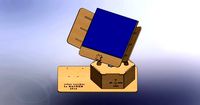
solar tracker
...aterial : -arduino uno -2 step motor with driver -4 ldr sensor -some wires -small photovoltaiic pannel -buzzer -cnc laser machine
turbosquid
$23
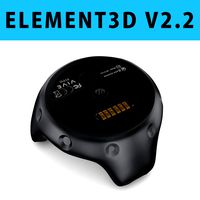
E3D -HTC Vive Tracker
...model e3d -htc vive tracker for download as max, obj, and c4d on turbosquid: 3d models for games, architecture, videos. (1190728)
3d_export
$7

sci-fi injector or tracker
... can be tracker, use as you want. pbr 4k contain: blend (includes high poly)/ dae / fbx / obj / stl / glowing injector + box
3d_export
$10
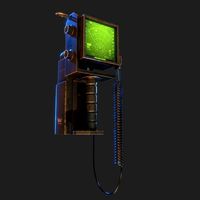
Motion Tracker Aliens
...er out moving objects from stationary background and then displayed them on the monitor as a series of contours of probable loci.
3d_export
$5

single axis solar tracker stand
...single axis solar tracker stand
3dexport
3d_export
$60

grumman s-2 f tracker
...ining in service with other air arms into the 21st century. argentina and brazil are the last countries to still use the tracker.
3d_export
$19

Chevrolet tracker 2021
...pport ticket and request for that. we can convert 3d models to: .stl, .c4d, .obj, .fbx, .ma/.mb, .lwo/.lws, .3ds, .3dm, .dxf/.dwg
3d_export
$25

emergency power with solar tracker
...cker
3dexport
this is a tool used to distribute electricity during an emergency disaster, it is recommended to use sketchup 2019
Rf
design_connected
$16

S 533 RF
...s 533 rf
designconnected
thonet s 533 rf computer generated 3d model. designed by mies van der rohe, ludwig.
3ddd
$1
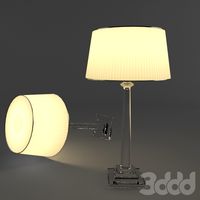
Chelsom rf 400 cl
...chelsom rf 400 cl
3ddd
chelsom
настольный светильник chelsom. aртикул rf/400/cl
turbosquid
$35

RF Speech Processor
...d model rf speech processor for download as 3ds, max, and obj on turbosquid: 3d models for games, architecture, videos. (1299309)
turbosquid
$42

RF-7.mb
... available on turbo squid, the world's leading provider of digital 3d models for visualization, films, television, and games.
3d_export
$60

vought rf-8 crusader
...evel photographs impossible to acquire by other means. united states navy reserve units continued to operate the rf-8 until 1987.
3d_export
$10

gerb gvc rf
...gerb gvc rf
3dexport
emblem of the main computing center of the russian federation
3d_export
$10

gerb zwo rf
...gerb zwo rf
3dexport
emblem of the western military district of the russian federation
3ddd
free

GAGGENAU RF 200
...au rf 200
3ddd
gaggenau , холодильник
http://www.gaggenau.com/ua/product/rf200
3d_export
$60
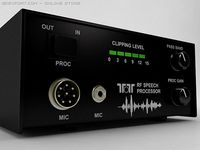
RF Speech Processor 3D Model
...n television audio signal wave mic microphone shortwave meter decibal wavel
rf speech processor 3d model plutonius 20629 3dexport
3d_export
$60

mcdonnell douglas rf-4c phantom
...ive armament, although during the last few years of its service some were fitted with four aim-9 sidewinder missiles for defense.
Item
turbosquid
$3

items
... available on turbo squid, the world's leading provider of digital 3d models for visualization, films, television, and games.
3d_export
$10

decorative items
...decorative items
3dexport
name: decorative items
3ddd
free

New Items
...ew items
3ddd
new items , барный
барный стул от китайского производителя фирмы new items
3ddd
$1
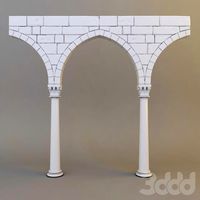
Dec-Item
...dec-item
3ddd
арка , колонна
dec-item
3d_export
$10

cartoon - items
...cartoon - items
3dexport
cartoon - items<br>cartoon objects dae fbx cg lowpoly collection pack 3d 3dmodel object items
3ddd
$1

KOU ITEM
...kou item
3ddd
kou
одна из люстр ручной работы kou item
turbosquid
$4
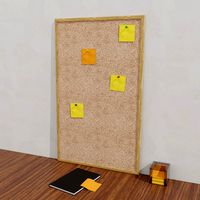
Office Items
...rbosquid
royalty free 3d model office items for download as on turbosquid: 3d models for games, architecture, videos. (1646258)
turbosquid
free

Halloween Items
...
turbosquid
free 3d model halloween items for download as ma on turbosquid: 3d models for games, architecture, videos. (1216704)
turbosquid
$28

Decorative Item
...id
royalty free 3d model decorative item for download as max on turbosquid: 3d models for games, architecture, videos. (1494064)
turbosquid
free

kitchen items
...quid
royalty free 3d model kitchen items for download as fbx on turbosquid: 3d models for games, architecture, videos. (1365367)
